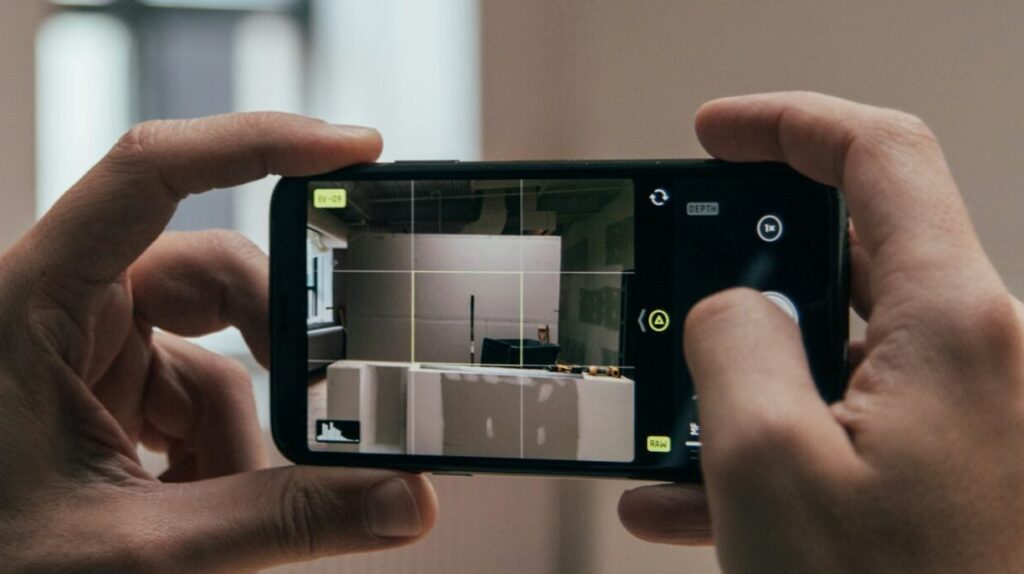Introduction
Photography has evolved from early inventions like the camera obscura to modern smartphone cameras, transforming how we capture and share images.
Key Takeaways
- Photography Evolution: From the camera obscura to smartphones, photography has seen significant technological advancements since the 19th century.
- Digital Transformation: The shift from film to digital, and then to smartphones, revolutionized image capture and sharing with innovations like computational photography.
- Smartphone Camera Benefits: Smartphones offer affordable, high-quality photography with features like multi-lens systems and AI enhancements, making them accessible to billions.
- Future Prospects: Future advancements in sensors, zoom, and AR/VR integration will enhance smartphone photography, though challenges like low-light performance remain.
Historical Overview
Photography has come a long way since its inception in the early 19th century. The first permanent photograph was taken by Joseph Nicéphore Niépce in 1826, marking the birth of photography. For over a century, film-based cameras dominated the scene, capturing moments and preserving memories.
Early Photography

The journey of photography began with the invention of the camera. The first camera, known as the camera obscura, was a simple device that projected an image onto a surface. The above image is an example of it.
Over the centuries, the camera evolved through various stages, from the daguerreotype in the 19th century to the film cameras of the 20th century. These early cameras were large, cumbersome, and required a significant amount of time to capture a single image.
Transition from Film to Digital Photography
The transition from film to digital photography marked a significant turning point. In the late 20th century, digital cameras began to emerge, offering the ability to instantly view images, delete unwanted photos, and store thousands of images on a single memory card.
The first consumer digital camera, the Logitech Fotoman, was introduced in 1990. By the early 2000s, digital cameras had largely replaced film cameras in the consumer market, paving the way for the next revolution in photography – the smartphone camera.
Evolution of Camera Phones
The first camera phone, the J-SH04, was introduced by Sharp in 2000. It had a 0.11-megapixel camera and changed the way people captured their lives.
However, it was the introduction of the iPhone in 2007 that truly marked the beginning of the smartphone photography era. With its 2-megapixel camera, the iPhone made high-quality photography accessible to the masses.

Over the years, smartphone camera technology has seen tremendous advancements. From single to dual, triple, and even quad-camera systems, smartphones now offer wide-angle, telephoto, macro, and depth-sensing cameras.
Innovations like optical image stabilization, night mode, and computational photography have further enhanced the capabilities of smartphone cameras.
Today, smartphones not only capture high-resolution images but also offer professional-grade features like manual controls, RAW format support, and 4K video recording.
Technological Advancements
Over time, multiple technological advancements shaped the history of smartphone cameras.
Camera Hardware in Smartphones

The sensor is the heart of a camera. In smartphones, the size of the sensor has a significant impact on image quality. Larger sensors capture more light, resulting in better image quality, especially in low-light conditions.
The quality of the lens in a smartphone camera is crucial for capturing sharp and clear images. Smartphone manufacturers have been innovating in this area, introducing features like multiple lens systems for wide-angle and telephoto shots.
Image stabilization is a key feature in smartphone cameras, helping to reduce blur caused by shaky hands. Optical Image Stabilization (OIS) and Electronic Image Stabilization (EIS) are commonly used techniques.
OIS physically moves the camera lens to counteract camera shake, while EIS uses software algorithms to correct shake.
Software Enhancements

Software enhancements like computational photography refers to the use of software algorithms to enhance or extend the capabilities of digital photography.
Features like HDR (High Dynamic Range), bokeh effects, and night mode are all products of computational photography. These features allow smartphone cameras to overcome hardware limitations and produce images that were once only possible with professional cameras.
Similarily, Artificial Intelligence (AI) and Machine Learning (ML) have become integral parts of photo processing in smartphones. They enable features like scene recognition, automatic adjustments, and object detection.
For instance, Google’s Pixel phones use AI and ML for their Night Sight feature, which produces incredible low-light photos.
Smartphones not only capture photos but also provide tools for editing them right on the device. From basic cropping and filters to more advanced features like selective edits and layering, these tools have made post-processing more accessible to everyday users.
Comparison with Traditional Cameras

While smartphone cameras have come a long way, they still have their pros and cons compared to traditional DSLRs and mirrorless cameras. On the plus side, smartphones are compact, always with you, and offer a seamless sharing experience.
However, they still can’t match the image quality, especially in challenging conditions, and the level of control that DSLRs and mirrorless cameras provide.
The rise of smartphone photography has certainly had an impact on the market for traditional cameras. While it has led to a decrease in sales of point-and-shoot cameras, the market for professional-grade DSLR and mirrorless cameras remains strong.
This is because professionals and enthusiasts who demand the highest image quality and control still prefer these traditional cameras.
Democratization of Photography

Affordability and Availability
While high-end DSLRs and mirrorless cameras can cost thousands of dollars, smartphones offer a more affordable alternative for high-quality photography.
Most smartphones come equipped with advanced camera features, making them a cost-effective solution for those who want to capture high-quality photos without investing in expensive camera equipment.
The global penetration of smartphones has played a significant role in the democratization of photography. According to Oberlo, as of 2024, there are over 4.88 billion smartphones users worldwide. This widespread availability of smartphones means that more people than ever have access to a high-quality camera in their pocket.
Ease of Use
Smartphone cameras come with user-friendly interfaces and automated settings, making it easy for anyone to take good photos. Features like auto-focus, auto-exposure, and face detection help users capture great photos without needing to understand complex photography concepts.
One of the biggest advantages of smartphone photography is the ability to immediately share photos with others. Whether it’s through messaging apps, email, or social media, sharing photos has never been easier.
Cultural and Societal Impacts
There are several societal impacts of smartphone photography as mentioned below.
- The advent of smartphone photography has democratized the field, shifting the power from professional photographers to everyday users.
- This shift has also changed why we take photos. While photography was once primarily used to document important events, it has now become a way to communicate, and interact with the world around us.
- Smartphone photography has gained acceptance and recognition in art circles. Many professional photographers now use smartphones alongside traditional cameras.
- The rise of smartphone photography has also led to the emergence of new genres and styles. For example, iPhoneography, the art of creating photos with an iPhone, has become a recognized form of artistic expression.
- While smartphone photography has many benefits, it also raises concerns about surveillance and privacy. This has led to debates about the ethics of public photography and the need for appropriate laws.
Challenges and Limitations
Despite the significant advancements in smartphone camera technology, there are still limitations due to the inherent constraints of small sensors and lenses.
Small sensors can struggle to capture enough light, leading to noise in low-light conditions. Similarly, the small size of smartphone lenses can limit the depth of field and detail that can be captured in an image.
Future Prospects

As technology continues to evolve, we can expect to see even more advancements in smartphone camera technology. We might see improvements in sensor technology, allowing for better low-light performance and increased dynamic range.
There could also be advancements in lens technology, with the potential for more sophisticated zoom capabilities and improved image stabilization techniques. We can already see this happening in the Samsung Galaxy S series. The Galaxy S24 Ultra has 100x zoom capability.
Looking ahead, we might also see the integration of smartphone cameras with emerging technologies like Augmented Reality (AR) and Virtual Reality (VR). These technologies could offer new ways to capture and interact with images, opening up exciting possibilities for smartphone photography.
Conclusion
The shift from traditional to smartphone photography has been revolutionary, making high-quality photography accessible to the masses. Technological advancements in both hardware and software have played a crucial role in this shift.
The smartphone not only “replaced” cameras but many other devices too. As time passes, we might see more exciting advancements which we never even had thought about.
Note: Any verdict given by us on any of the companies, or specs of a device is subjective. Our preferences can be different from yours, so be sure to conduct your own research to make a decision that is good for you.
Check out more information about Fast charging and its impact on battery.
Frequently Asked Questions (FAQs)
Phonesaaz aims to guide users toward making informed purchase decisions by offering clear, jargon-free insights. It covers product comparisons, reviews, and targeted guides to address specific aspects of smartphone use.





